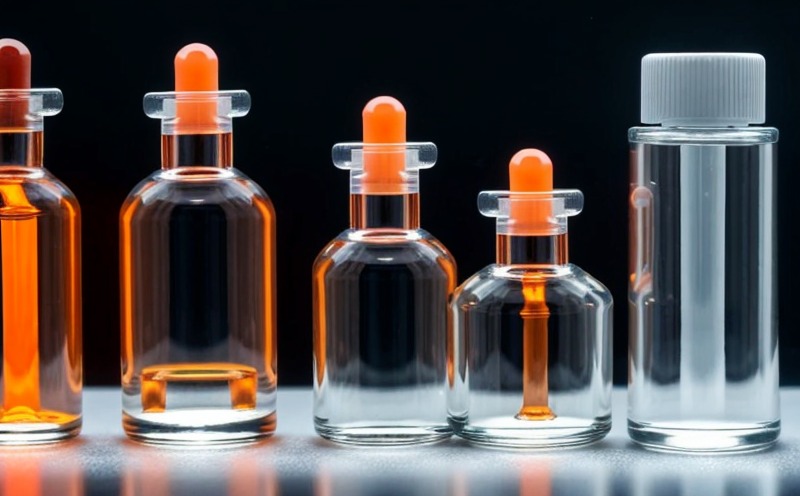ASTM F756 Hemolysis Testing of Nanomaterials in Blood Contact Applications
The ASTM F756 standard provides a standardized method to evaluate the hemolytic potential of materials intended for use in contact with human blood. This service is particularly important for nanomaterials, which are increasingly used in biomedical applications such as drug delivery systems, medical implants, and diagnostic tools.
Hemolysis refers to the breakdown or lysis of red blood cells. When a material comes into contact with blood, it may cause red blood cell damage leading to hemolysis. The ASTM F756 test measures this by quantifying the release of hemoglobin from red blood cells exposed to the nanomaterial under controlled conditions.
The testing process involves several key steps:
- Preparation of a suspension of nanomaterials in phosphate-buffered saline (PBS).
- Addition of this suspension to human red blood cell suspensions.
- Incubation at 37°C for one hour.
- Centrifugation and measurement of hemoglobin release into the supernatant using spectrophotometric methods.
The results are expressed as a percentage of hemolysis, which helps in assessing the safety profile of the nanomaterials. This test is crucial for ensuring that materials used in medical devices do not pose undue risk to patients by causing excessive hemolysis when they come into contact with blood.
The ASTM F756 method is widely recognized and accepted globally as a reliable means of assessing hemolytic potential, making it an essential part of the regulatory approval process for biomedical applications. Compliance with this standard ensures that products meet stringent safety requirements before being introduced to the market.
Our laboratory uses state-of-the-art equipment and follows rigorous protocols to ensure accurate and reproducible results. Our team of experts has extensive experience in conducting ASTM F756 tests, ensuring compliance with international standards and providing reliable data for your product development or regulatory submissions.
In addition to the ASTM F756 test, we also offer other services related to nanotoxicology and safety testing that complement this service. These include cytotoxicity assays, genotoxicity assessments, and in vivo studies tailored to specific applications of your nanomaterials.
Scope and Methodology
The ASTM F756 test is designed to evaluate the potential for hemolysis caused by contact between materials and human blood. This method applies specifically to nanomaterials intended for use in biomedical applications where direct or prolonged contact with blood is anticipated.
The primary objective of this testing is to determine whether a given material would cause significant hemolysis, which could lead to adverse health effects if not controlled. The test protocol involves exposing human red blood cells suspended in phosphate-buffered saline (PBS) to the nanomaterials for one hour at 37°C.
Following incubation, the mixture is centrifuged to separate the supernatant containing released hemoglobin from the remaining cells. Hemoglobin concentration is then measured spectrophotometrically using a specific wavelength that absorbs light absorbed by hemoglobin. The percentage of hemolysis is calculated based on this measurement.
The ASTM F756 test does not establish limits for hemolysis; instead, it provides a means to compare results between different materials or batches of the same material. Compliance with acceptable levels depends on regulatory requirements and intended use cases. Our laboratory can assist you in interpreting these data within relevant contexts.
Industry Applications
The ASTM F756 hemolysis testing is particularly relevant for industries developing medical devices, implants, drug delivery systems, and other products that come into direct contact with human blood. By ensuring materials are safe from causing hemolysis, these industries can enhance patient safety and compliance with regulatory standards.
Medical device manufacturers often use nanomaterials to improve the performance of their products. For instance, nanoparticles can be incorporated into coatings on catheters or surgical instruments to prevent clotting or reduce infection risks. However, it is crucial that such materials do not induce hemolysis during normal operation. ASTM F756 testing helps identify any potential issues early in the development process.
Pharmaceutical companies also benefit from this service when designing drug delivery systems like liposomes or nanocapsules. These systems may interact with blood components, and understanding their hemolytic properties is essential for ensuring efficacy without adverse side effects.
In addition to healthcare providers, laboratories conducting research on advanced materials or polymer science could utilize ASTM F756 testing to evaluate the safety of new formulations before commercialization.
International Acceptance and Recognition
The ASTM F756 standard has gained widespread acceptance across various sectors due to its reliability and consistency in assessing hemolytic potential. Many regulatory bodies worldwide recognize this test as part of their approval processes for medical devices, implants, and other products that interact with blood.
For instance, the United States Food and Drug Administration (FDA) references ASTM F756 in its guidelines for evaluating materials used in contact with human blood. Similarly, European Union directives incorporate similar principles from this standard when approving new medical technologies.
Australia's Therapeutic Goods Administration (TGA), Canada's Health Products and Devices Branch, and other regulatory authorities also consider results from ASTM F756 tests during their review processes. This global recognition underscores the importance of conducting thorough hemolysis assessments early in product development cycles to meet international standards.





